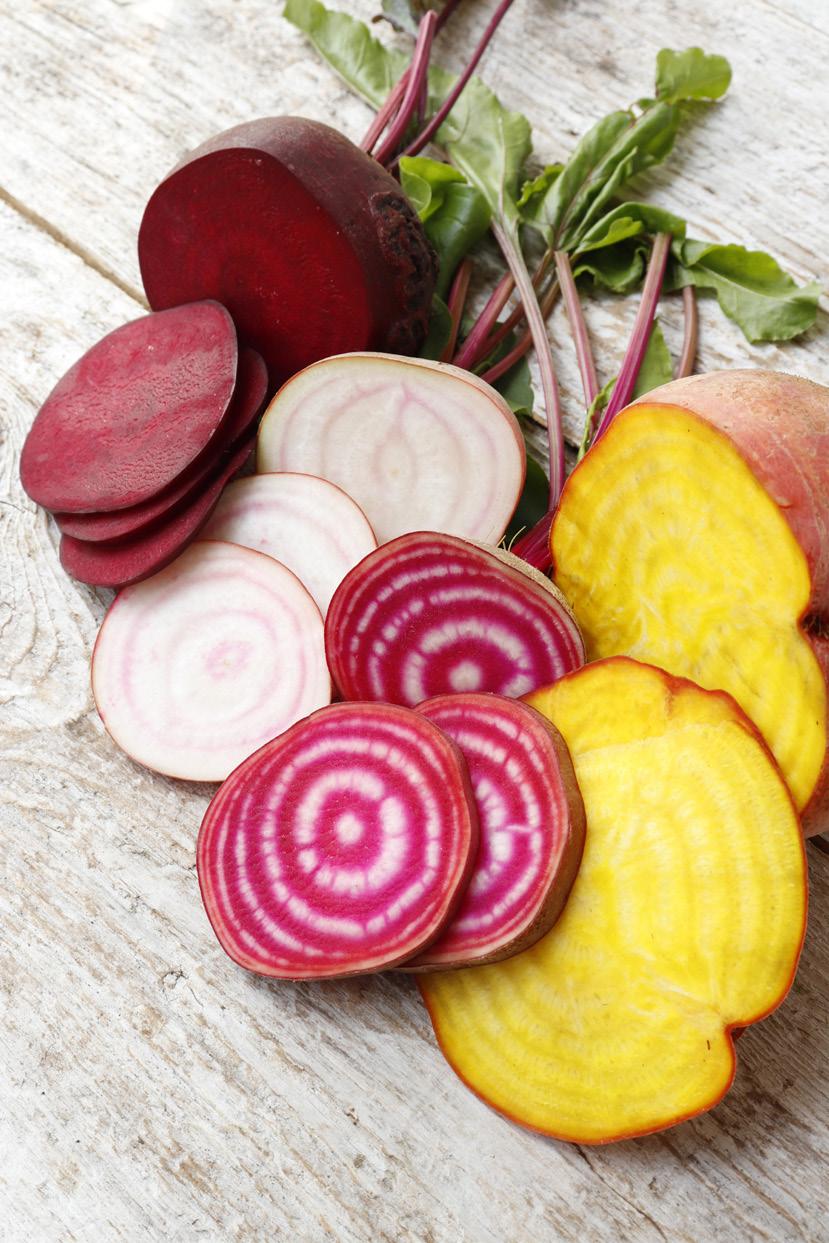
2 minute read
Gardening
Turn the Beet Around
HOW TO GROW BEETS IN YOUR COASTAL BEND GARDEN BY: JUSTIN BUTTS
Beets are easy and fun to grow, and the cold days of January in the Coastal Bend are the perfect time to plant them in your garden. Plant beet seeds now and enjoy them by the sunny days of March.
Beets prefer cool weather, and cannot survive in the Coastal Bend heat past April. They also prefer sandy soil. In clay-rich soil, till the bed intensively and add plenty of organic compost to loosen the soil and allow the tiny hair-like roots to grow – they can go up to five feet deep.
Detroit Dark Red: 55 days. Best all-around beet for Coastal Bend. Beautiful, crimson color throughout beet; excellent greens. Grows easily and well, few pests. Excellent flavor, sweet and earthy. Solid performer.
Early Wonder: 45 days. Very popular. Fastest growing. Be sure to plant in early January, as it shuts down in the heat of late March. Deep red color throughout. Nice flavor. Small greens.
Golden Beets: 55 days. Amazing flavor, mild and sweet. A gorgeous, golden hue. Golden beets do not “bleed” like red beets. They can be cooked in recipes without worrying about coloring the other ingredients, as red beets tend to do.
Chioggia: 60 to 75 days. Gorgeous beets. Named after a fishing village in Italy where they were considered the best beets in the world. The root skin is a rich, crimson red, while the inside is white with purple rings. Chioggia beets mature at only 2” diameter. They're so delicious they can be eaten raw.
a need-to-know basis
GROWING UP
Spacing, 3”. Height, 6” to 12”. Cool weather vegetable. Full sun to maximize sunlight of short winter days. Well-tilled, well-drained soil (preferably sandy soil) with plenty of organic compost. Hand broadcast seeds over bed and rake to 1/2” depth. Can also plant seeds in rows 3” apart. Keep soil moist until sprouting. Thin sprouts frequently (enjoy these delicious thinnings!) to final spacing of 3”. Compost with native leaf mulch in March to keep soil cool.
PROFILING
Harvest beets when roots are 3” in diameter. Don’t let beets grow too large or stay in soil too long; they lose flavor and become tough. Mature beets do not produce prolific leaves; plant energy is devoted to the root. Harvest beets when soil is moist for ease of removal; loosen soil carefully with a garden fork if needed. Twist off the greens instead of cutting to prevent bleeding. Store roots in cool, dry place for weeks or months.
LOCAL RECS
“My introduction to beets as a child was sugary, sweet pickled beets my grandmother always kept in the fridge. Beets are naturally high in sugar and are delicious steamed, sautéed, thinly sliced, or (my favorite) roasted with a little olive oil and sea salt.”
– Kayla Butts, MS, RDN, LDN @kaylabuttsmsrd
FUN FACTS
In 1747, a German chemist discovered that certain beets produced sugar identical to sugarcane. Sugar beet production increased in Europe and received a major boost from Napoleon Bonaparte when England blockaded Caribbean sugarcane from France. By the 1900s, sugar beets became a major American sugar crop. Today, sugar derived from beets makes up 54% of U.S. sugar production.










